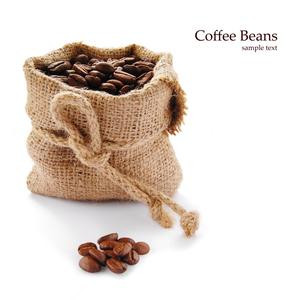Coffee Coffee Coffee introduction to Arabica species

Arabica VS Robusta
As a crop, tree species and growing environment are the basic factors for good ring of coffee beans. Coffee beans currently circulating in the coffee market are either Coffea Arabica or Coffea Robusta. In general, Arabica coffee trees are fragile, have low resistance to pests and diseases, and have high requirements for planting environment. Their coffee beans have low caffeine content and high acidity and complexity. Robusta coffee trees, on the other hand, can grow at lower altitudes, have stronger disease resistance and vitality, have higher caffeine content in their coffee beans (about twice as much as Arabica beans), and taste less rich than Arabica beans, but have a good consistency.
Boutique coffee is almost always Arabica or a derivative of Arabica, and the only thing that makes Robusta coffee beans and boutique coffee related is Espresso(Italian espresso). In Espresso's blended coffee bean formula, a small amount of higher-processed Robusta beans is usually added to add sweetness and consistency to the formula.
Fine Coffee VS Commercial Coffee
The concept of specialty coffee was first proposed mainly to distinguish it from bulk commercial coffee on the New York Futures Exchange. Fine coffee beans are often produced in small quantities because of their picky growing environment and time-consuming processing.
In order to meet the demand of bulk commercial market, some Arabica coffee beans are planted in large areas at low altitudes, and are harvested in large quantities regardless of maturity. They are not so delicate in all aspects of green bean processing, transportation and roasting, and are likely to use fertilizers and pesticides to increase yield and pest resistance. These Arabica and Robusta beans are usually the main ingredients for cheap canned coffee beans, coffee powder, instant coffee in supermarkets and cheap coffee in some cafes or offices.
From the flavor point of view, the biggest difference between the two is that "bulk commercial beans drink monotonous, slightly bitter, must add sugar to the mouth; fine beans have obvious 'regional flavor', sour and sweet alcohol is extremely thick, sugar or cream is like a waste of heaven"(Han Huaizong "Coffee Science: Secret History, Fine Products and Roasting Introduction").
Single coffee VS mixed coffee
Single-Original coffee refers to coffee made from coffee beans from a single origin and harvest season. In order to express the "regional taste" of different producing areas, fine coffee is often dominated by single products. There are also blends of beans from different harvest seasons or more than two different regions, which are called blends or blends.
In most cases, the goal of blending is to achieve a new coffee flavor, such as the world's oldest and most famous Mocha-Java Blend, or to blend a local preference for a blend of coffee in the context of cultural and regional differences. Whatever the purpose of blending, it is based on the same starting point: to combine different types of coffee beans and complement each other without weakening the flavor intensity. A good blend naturally depends on the recipe, which is the magic weapon of each coffee manufacturer, and on the quality of the individual coffee beans blended.
Obviously, there is no direct correlation between single coffee or mixed coffee and whether it is fine coffee. And in fact, most of the single-brand coffee on the market with the same name as boutique coffee is just some ordinary cheap coffee beans.
Black coffee VS fancy coffee
Generally speaking, whether it is a single product or a comprehensive coffee, it is directly drunk after extraction without other modulation, that is, black coffee in the general sense. While the regional flavor of specialty coffee is fascinating, it also prevents coffee from adding milk, sugar, and spices such as chocolate, vanilla, cinnamon, mint, or whiskey to create a variety of styles and personalities. Fancy caffeine its modulation flavor characteristics have far exceeded the coffee production area itself, in order to ensure the integrity and stability of coffee flavor, generally use comprehensive coffee as the base.
Espresso espresso
Some café menus say "espresso" and "American coffee" and can be collectively referred to as espresso or espresso. It originated from the Italian invention of high-temperature steam extraction technology, it can now be said that it is from green beans blending, roasting, extraction and living culture are its own system of mainstream coffee genre.
Espresso is defined as "a blend of coffee beans deeply roasted at 7 grams, ground to a very fine coffee powder, and subjected to steam at 9 atmospheres and 90 degrees Celsius to rapidly extract 30 ml of strong coffee liquid in a short period of 20 seconds." Espresso tastes thick and smooth, making people drink like a "velvety feeling", and the viscosity will form a lower surface tension, which can invade the taste buds and make the fragrance reverberate in the mouth. Espresso machines make coffee with more water content and lighter coffee is called Americano.
Espresso is a comprehensive art of coffee, which has a complete and independent system of blending, roasting and cooking, which can be studied for a lifetime. Espresso as the base, add milk, caramel, chocolate, milk foam, etc. to derive latte (Latte), cappuccino (Cappuccino), mocha (Mocha), macchiato (Macchiato) and other classic flavor coffee. Now Italian cafes are popular all over the world, and there are many streets, but whether you can drink a cup of "fine coffee" has nothing to do with the term Italian coffee or Espresso.
Important Notice :
前街咖啡 FrontStreet Coffee has moved to new addredd:
FrontStreet Coffee Address: 315,Donghua East Road,GuangZhou
Tel:020 38364473
- Prev

Yunnan Coffee Story Baker Old Section
Every year, in every season when coffee trees blossom, bear fruit and pick fresh fruits, I will go to Yunnan Lujiangba Gaoligong Mountain, Menghai and other coffee producing areas to inspect, purchase, inspect goods for two or three times, and write down this feeling when I am waiting for a plane at Kunming Airport. I was very moved when I went to Xiaopingtian of Lujiangba this time: a farmer named Lao Duan is sparing no effort to promote Yunnan coffee.
- Next

Coffee basic knowledge what is boutique coffee
Coffee in boutique producing areas (boutique coffee, Specialty Coffee) is strictly defined as a proper term. Like fine wine and tea, the geographical environment, climatic characteristics and regional flavor (Terroir) formed by planting traditions in different producing areas are also the soul of high-quality coffee producing areas. As a proper term, fine coffee (Specialty Coffee) was first called boutique.
Related
- Beginners will see the "Coffee pull flower" guide!
- What is the difference between ice blog purified milk and ordinary milk coffee?
- Why is the Philippines the largest producer of crops in Liberia?
- For coffee extraction, should the fine powder be retained?
- How does extracted espresso fill pressed powder? How much strength does it take to press the powder?
- How to make jasmine cold extract coffee? Is the jasmine + latte good?
- Will this little toy really make the coffee taste better? How does Lily Drip affect coffee extraction?
- Will the action of slapping the filter cup also affect coffee extraction?
- What's the difference between powder-to-water ratio and powder-to-liquid ratio?
- What is the Ethiopian local species? What does it have to do with Heirloom native species?

